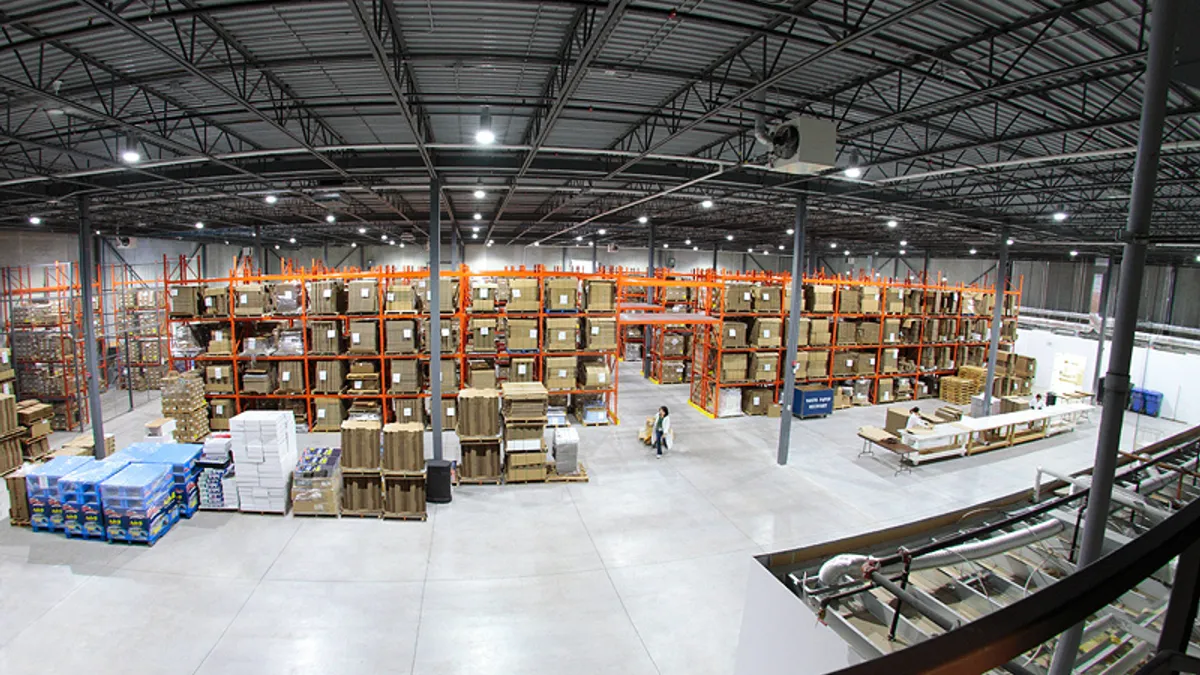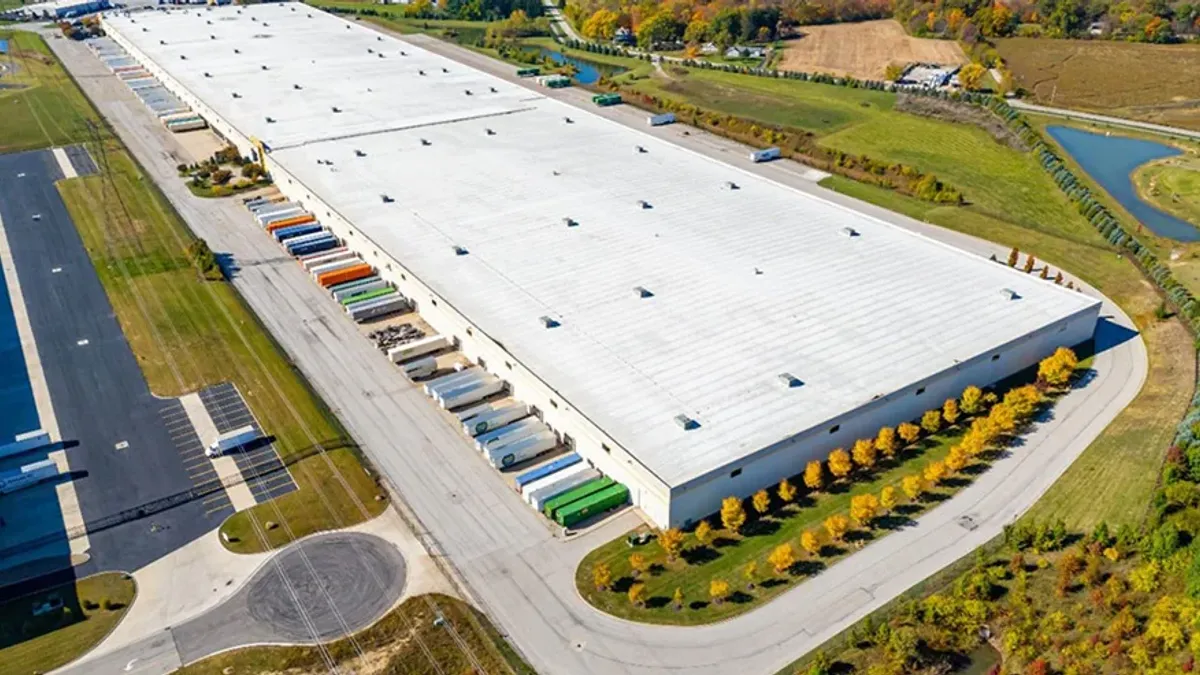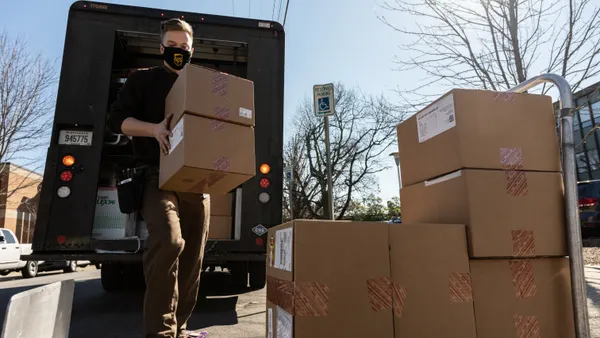The following is a guest post from Richard Jones, Co-founder, CTO and EVP of operations at CommerceHub.
Drop ship – once a tactical expediency – has become a key, strategic growth driver for retailers and brands in North America over the past 18 years, and I’ve been fortunate to enjoy a ringside seat to its evolution.
The tactic allows retailers to sell large assortments of items they do not independently own, stock or fulfill by having a supplier send the item directly to the end customer. When done right, drop shipped items are fulfilled with the same branding, shipping performance and customer experience as if they had come from the retailer’s own warehouse, while allowing the retailer to take no inventory risk and enjoy wholesale margins.
Previously a tactic reserved for bulk replenishment or mail-order providers, the rise of the internet led to industry-wide adoption over the past two decades, and its progress shows no sign of slowing. Drop shipping will soon become a core competency for the retailer and drop ship supplier alike.
Prior to rushing to the market, however, executives may benefit from a brief history outlining the trends and key events leading to the tactic’s popularization.
Early days
Absent of the internet, wholesale fulfillment in the latter 20th century was overwhelmingly concerned with bulk replenishment. Items were shipped in large volumes from a manufacturer or supplier’s distribution center (DC) to a retailer’s store or cross-dock facility – think forklifts and pallets.
Direct-to-consumer (D2C) fulfillment was largely non-wholesale. Mail-order catalogers like Sears, JCPenney, and Ingram Books were fulfilling from their own inventory in specialized warehouses that could pick and pack single items – think small boxes and UPS at your door.
At the time, there were also catalog-only retailers like SkyMall and premium incentives vendors like Americorp and CompuCard. These companies built their businesses by being the sales channel for the products held by other D2C catalogers. They took top line revenue and marked up the cost of the goods, plus shipping and handling.
As the number of suppliers who could drop ship grew, drop shipping as a fulfillment option began to attract the attention of traditional retailers.

Richard Jones
Co-founder, CTO and EVP of Operations at CommerceHub
It was primitive: allowing four to six weeks for delivery was standard and orders were communicated on paper or via fax. But it was what we now consider to be true drop shipping. And though SKU assortments were typically small, volumes could be very large.
Meanwhile, a class of distributors existed who specialized in replenishment for small mom-and-pop retailers. They would buy products in bulk from manufacturers and pick relatively small shipments for many stores. When early drop shipping retailers came calling, it was these distributors who found themselves well prepared to start shipping in high volumes directly to end customers in a completely transparent way.
The rise of e-commerce
One of the earliest killer apps for the early internet was the online storefront.
Once people learned to trust their credit card to a website, it was clear that e-commerce would be the huge wave of the future. Established retailers like Wal-Mart, Target, QVC and Sears dabbled with e-commerce as side projects. They would set up experimental teams that were usually separate from the main organization, build a primitive store front, put up a handful of products, and ship out of some corner of a DC.
Fueled by the ‘irrational exuberance’ of dot-com funding, many pure-play retailers like ValueAmerica and Pets.com also exploded into existence. These were to be a new brand of retailer who were purely digital, owning no stores, warehouses, or stock. They would focus on branding, merchandising, and customer support. They would rely on drop ship distributors to fulfill products at wholesale. Another famous example of a pure-play from this time was Amazon.com, a small online bookstore.
Yet, as the number of suppliers who could drop ship grew, drop shipping as a fulfillment option began to attract the attention of traditional retailers.
Their online experiments were starting to turn into real businesses. Online, there was no lack of shelf space. With drop shipping, there was no need to restrict assortment because of inventory risk. Retailers did not need to stock large items like play sets, fringe items like perishables, or custom items like blinds. The endless aisle was born.
Meanwhile, customer expectations for their online experience were low. Consumers were still learning how to shop online. They were delighted to get an email saying their product had shipped. They were happy when it came in only 10 days.
At the same time, retailers were still learning how to sell online – whether they fulfilled out of their own DCs or from drop shippers.
From experiment to business strategy
From getting products up on a site with images and descriptions, to taking returns, retailers were scrambling to invent their e-commerce story as they rode rocketing sales.
Those retailers who aggressively pursued drop shipping saw their sales grow even faster. It was clear that increasing assortment size correlated to higher sales growth, and drop ship provided just that. A savvy retailer constantly sought out new products and might be connected to thousands of drop ship suppliers to fulfill them.
Once people learned to trust their credit card to a website, it was clear that e-commerce would be the huge wave of the future.

Richard Jones
Co-founder, CTO and EVP of Operations at CommerceHub
However, operating drop ship networks at scale was a challenge.
Gone were the days of paper and fax order communication. Real-time visibility into order status was required for great customer service. Knowing that a drop shipped item was out of stock meant the difference between a happy customer and a lost customer. High volumes required electronic integration, and drop ship suppliers ranged in IT competence from big companies like Dell to small boutique sellers operating out of their garages.
For their part, drop shippers themselves saw huge growth as they found more and more retailers to whom they could sell. Their challenges included satisfying retailers’ integration and program requirements, managing product content like images and descriptions, keeping products in stock, and meeting fulfillment performance expectations. As time passed, retailers would learn to raise their expectations dramatically.
Amazon changed everything
Retailers who aggressively embraced drop shipping continued to outpace aggregate e-commerce growth as they learned to tighten their operations and improve their control.
Efforts to optimize operations over the past 6-7 years have focused on supplier onboarding, visibility, expedited order capabilities, and perfecting the art of exception management, among others. For their part, drop ship suppliers continued to build out their integration capabilities, installing solutions that integrated drop ship orders from their sales channels directly into their ERP systems.
Very slowly at first – and then suddenly – that little bookstore I previously mentioned became the Amazon we all know: the driving force in online retail.
Thanks to Amazon, customers have come to expect more and more from their online buying experience. Today, the average consumer expects to see a large assortment of items and to find the item they are looking for, all the while demand fasting shipping, free shipping, or both.
Amazon raised the bar by building warehouses everywhere. It was their goal to have millions of SKUs within one-day ground shipping to 99% of the population. Many metro areas have several Amazon pick and pack facilities, and the company is an expert at load balancing, consolidating shipments, and maximizing inventory turns.
What’s next for drop shipping?
Retailers are now focused on faster turnaround among their drop ship suppliers and optimized shipping rates. The pressure to offer expanded assortments is as relentless as ever, but retailers must pay attention to the productivity of each SKU. Many SKUs offered on a retailer’s site never sell a single unit, with no offset to the cost of setting up that item in the first place. Insight into SKU velocity by brand, category and margin has never been more important.
Marketplaces that sell products from third-party sellers – such as Amazon, Walmart, and Jet – have also emerged as an alternative way for retailers to expand their directly-fulfilled assortment and reach a large, concentrated audience. This model is in direct competition with drop shipping. Unlike drop shipping, however, with marketplaces retailers recognize only sales commissions as revenue, not top line merchandise value.
Very slowly at first – and then suddenly – that little bookstore I previously mentioned became the Amazon we all know: the driving force in online retail.

Richard Jones
Co-founder, CTO and EVP of Operations at CommerceHub
Brands themselves are now moving into the drop shipping game. Where they were once happy to sell in bulk to single pick/pack distributors, brands now recognize that controlling the direct-to-consumer distribution of their goods themselves is critical to combating grey market sales and keeping control of their brand.
Both brands and distributors are answering the need for fast, efficient delivery by dispersing their inventories across the country. By building warehouses near every major metropolitan area, Amazon has upped the ante and made shipping a given product nationally from a single warehouse location unacceptable. Third party logistics warehouses (3PLs) are coming to the rescue of brands and drop shippers by helping them load balance their inventory geographically and deliver their products quickly and cheaply.
Drop shipping is an increasingly essential competency for virtually all retailers and brands, who will only see increasing pressure to provide larger assortments and faster, cheaper shipping. At the same time, they’ll also need to balance those pressures against the need to control their own identity and maintain their own customer relationships outside of the Amazon ecosystem. In any event, retailers cannot build enough warehouses or invest in enough inventory to sustain the kinds of growth necessary to ensure their survival. Drop shipping is here to stay.
Richard Jones is Co-founder, Chief Technology Officer and EVP of Operations at CommerceHub. Richard is responsible for engineering and product management, computing infrastructure and operations, supplier onboarding, and customer support. He has over 16 years of experience in delivering cloud-based supply chain and merchandising solutions to top North American retailers. He is the primary architect of the CommerceHub platform.





















